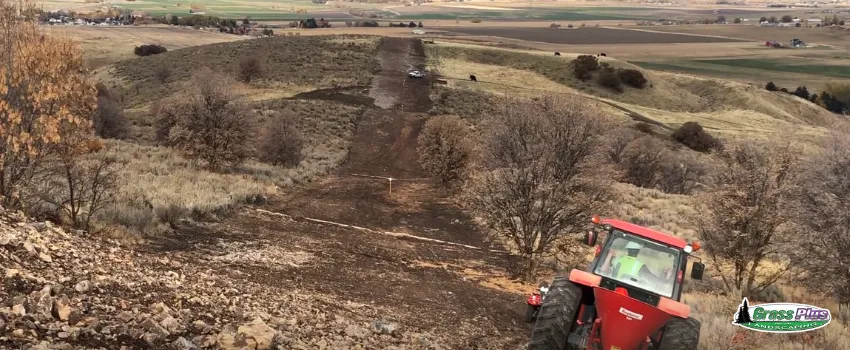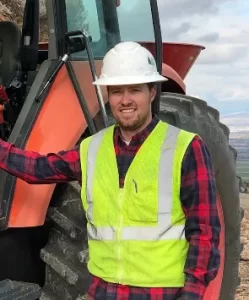Land reclamation and restoration are crucial for reviving damaged land and restoring its functionality. It involves rehabilitating areas affected by industrial activities, natural disasters, or other human interventions. Land reclamation aims to return the land to a productive and sustainable state while mitigating the negative impacts of its previous condition.
Restoring land to its former glory is no easy task. It requires careful planning, implementation of various techniques, and addressing specific challenges unique to each site. In this blog, we explore the different methods used in land reclamation and the hurdles faced by those involved in this noble endeavor.
What is Land Reclamation and Restoration?
Land reclamation and restoration refer to rehabilitating and revitalizing damaged land, enabling it to regain its original or improved state. It involves the scientific and strategic management of physical, biological, and cultural aspects to restore the land’s natural functions and enhance its value.
Land reclamation and restoration can take many forms, such as converting abandoned mines into recreational areas, revitalizing polluted sites for urban development, or creating wetlands to preserve biodiversity. The ultimate goal is to balance human needs and environmental sustainability.
Techniques in Land Reclamation and Restoration
Effective land reclamation and restoration require a tailored approach, considering the site’s specific characteristics and desired future use. Here are some common techniques used in the process:
1. Soil Replenishment and Enhancement
One of the first steps in land reclamation is replenishing and enhancing the soil’s quality. This can involve adding organic matter, such as compost or manure, to improve fertility and structure. In some cases, introducing specific microorganisms or plants can aid in the breakdown of pollutants and the restoration of natural soil functions.
2. Erosion Control Measures
During the reclamation process, it is vital to implement erosion control measures to prevent further site degradation. The main goal is to stabilize the soil and minimize sediment loss through erosion, safeguarding the progress made in land restoration.
3. Grading and Reshaping
Grading and reshaping the land are often necessary to restore its original topography or create a new, functional layout. This technique helps in the proper drainage of water and the prevention of soil erosion. The success of land reclamation greatly depends on the ability to recreate the natural features and contours of the site.
4. Water Management and Treatment
Water is crucial in land reclamation and restoration, and its management is essential. This can involve redirecting water by constructing channels or drainage systems to control moisture levels. Treatment technologies may sometimes be required to address water pollution and ensure its quality aligns with the intended land use.
5. Reintroduction of Native Plants and Wildlife
Reestablishing a vibrant ecosystem is a crucial objective of many land reclamation projects. This is achieved through carefully selecting and reintroducing native plants and wildlife species that can thrive in the rehabilitated environment. The return of these indigenous organisms not only enhances the site’s ecological value but also helps in its long-term sustainability.
6. Monitoring and Adaptive Management
The last technique in land reclamation is monitoring the site’s progress and implementing adaptive management strategies. This involves regularly assessing the performance of the reclamation measures and making necessary adjustments to ensure their effectiveness. Monitoring can extend over several years, and successful reclamation is often characterized by establishing a self-sustaining ecosystem.
Challenges in Land Reclamation and Restoration
Land reclamation and restoration projects face challenges that can significantly impact their success. Understanding these hurdles is essential for developing effective strategies to overcome them. Here are some common challenges encountered in land reclamation:
1. Site Complexity and Diversity
Each site earmarked for reclamation has unique challenges regarding soil composition, contamination levels, and geographical features. The complexity and diversity of these factors can make the restoration process more difficult and time-consuming, requiring careful planning and flexible approaches.
2. Financial and Time Constraints
Financial resources and time constraints are significant challenges in land reclamation. The process often demands substantial funding for the implementation of various techniques and the acquisition of necessary equipment. Moreover, reclamation can be lengthy, requiring thorough site assessments, remediation planning, and post-reclamation monitoring.
3. Stakeholder Engagement
Reclamation projects typically involve multiple stakeholders. Engaging these stakeholders and addressing their concerns is crucial but can be a challenging task. Effective communication and collaboration are necessary to ensure that the reclamation objectives align with all parties’ interests.
4. Legal and Regulatory Compliance
Meeting the legal and regulatory requirements for land reclamation poses another challenge. Depending on the jurisdiction, there may be specific permits and environmental standards that must be followed. Navigating the regulatory landscape requires expertise and a thorough understanding of the compliance process.
5. Long-Term Sustainability
Achieving long-term sustainability is the ultimate goal of land reclamation, but it can be challenging to attain. The success of a reclamation project is not solely measured by its initial outcomes but by the ability of the restored land to thrive over time. To achieve long-term sustainability, ongoing management efforts are needed.
Erosion Control: Safeguarding Reclaimed Land
Erosion control is the practice of preventing or minimizing the removal of soil particles by wind, water, or other agents. It plays a vital role in safeguarding reclaimed land, ensuring the success and longevity of the restoration efforts. Erosion can pose a significant threat to reclamation projects, as it can undo the progress made in restoring the land and result in the loss of valuable soil.
Effective erosion control involves implementing various strategies tailored to the site’s specific characteristics. These measures can include:
1. Vegetation Establishment
Establishing vegetation, such as grasses, shrubs, and trees, is one of the most common and effective erosion control measures. The roots of these plants bind the soil, reducing its susceptibility to erosion and providing stability to the reclaimed land. The type and density of vegetation selected depend on climate, soil conditions, and the desired land use.
2. Mulching
Mulching, the application of organic or synthetic materials to the soil surface, can significantly contribute to erosion control. It acts as a protective cover, shielding the soil from the impact of raindrops and reducing the velocity of surface runoff. Mulching materials can include straw, wood chips, and geotextiles, which are selected based on their effectiveness in the specific reclamation context.
3. Terracing and Contouring
Terracing and contouring are erosion control techniques commonly used in hilly or sloped areas. Terraces are level platforms constructed across the slope, reducing the speed of runoff. Contouring involves shaping the land into curved ridges that follow the natural contours, effectively trapping and retaining water and preventing erosion.
4. Erosion Control Blankets and Matting
Using erosion control blankets or matting may be necessary for more severe erosion risks. These materials are placed on the soil surface and provide immediate protection, minimizing the impact of rainfall and preventing the direct detachment of soil particles.
5. Drainage Management
Proper drainage management is essential in erosion control. Measures such as constructing ditches, channels, and retention ponds should be implemented. These features help redirect and manage the water flow, reducing its potential for causing erosion.
The Bottomline
Land reclamation and restoration are vital in addressing environmental concerns and utilizing previously unusable land. However, successful reclamation and restoration efforts require effective erosion control measures to safeguard the reclaimed land.
Erosion control techniques, such as vegetation establishment, terracing, and erosion control blankets, play a significant role in minimizing the removal of soil particles. These measures help maintain soil stability and prevent erosion, ensuring the long-term success and sustainability of the reclamation and restoration projects.
Partner With Grass Plus Inc. for Quality Reclamation and Erosion Control Services!
Let Grass Plus Inc. be your partner in reclamation and erosion control in Utah! We specialize in providing comprehensive strategies to ensure the success of your reclamation and restoration projects.
Ready to get started? Contact Grass Plus Inc. today, and let us make your vision of a reclaimed and erosion-free landscape a reality!







